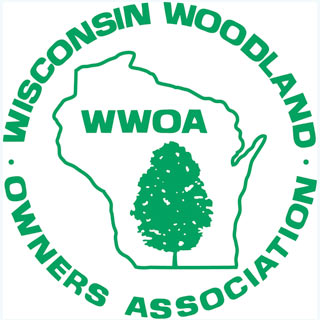The WWOA office has received several questions regarding the status of buildings and Managed Forest Law (MFL) land under Act 358. Per WI DNR guidance, see below to determine which situation applies to you.
My land is CURRENTLY (2016 or earlier) enrolled in the MFL program and has EXISTING Building/Improvement on it:
You will need to continue to follow the 1999 building provisions. Buildings “developed for human residence” are prohibited upon MFL lands. A building is considered, “developed for human residence” if it has at least 5 of the following 8 characteristics:
1. Living space totaling 800 square feet or more. Use exterior dimensions, include each level but exclude porches, decks, or un-insulated screen porches.
2. Indoor plumbing.
3. Central heating or cooling, including electric heat, furnace or other heater with a circulation system.
4. Full or partial basement. Exclude crawl spaces and frost walls.
5. Electrical service by connection to the lines of a power company.
6. Attached or separate garage associated with the living space. This does not include buildings that store vehicles used primarily for work or recreational activities on the property.
7. Local telephone service.
8. Building Insulation.
Some hunting or vacation cabins, outbuildings, workshops or sheds that protect equipment or vehicles used primarily for on-property management or recreation may be allowed upon MFL land. Any living space is subject to the building characteristic limitations listed above. MFL land may not be landscaped, gardened or developed for ornamental purposes (e.g. rock gardens, sculptures, game courts, etc.). Buildings within MFL lands are taxed as personal property. If personal property within MFL land becomes tax-delinquent, the land may need to be withdrawn from the MFL program and will be assessed fees.
My land is CURRENTLY (2016 or earlier) enrolled in the MFL program and I WANT TO ADD a Building/Improvement:
(updated per WI DNR guidance 5-16-16) Landowners that want to build a new building on currently enrolled MFL lands have a choice of building within the existing 1999 provisions (listed above) or withdrawing MFL land to build without these restrictions (see below).
Act 358 allows landowners to voluntarily withdraw one to five acres (a minimum of 1 full acre) for the purposes of construction or small land sales. Landowners should indicate on any open space of the Declaration of Withdrawal form that they are requesting the withdrawal for the purpose of construction or a land sale. Landowners wishing to withdraw more than 5 acres must provide documentation from the city, village, township or county zoning ordinance that establishes a minimum acreage for ownership of land or construction sites. A withdrawal tax and fee will be assessed for the withdrawn land.
For this provision, Act 358 specifically states that “partial” acreages cannot be withdrawn. In other words, only whole number acreages can be withdrawn; no “decimal” acreages (e.g. 1.5 acres cannot be withdrawn). It also specifically states that the withdrawn land must be at least one acre in size, so a withdrawal request for lands less than one acre cannot be processed.
This type of voluntary withdrawal may only occur once per MFL parcel for a 25 year order or twice per MFL parcel for a 50 year order.
I WANT TO ENROLL my land in MFL and I HAVE EXISTING Buildings/Improvements:
Act 358 prohibits the enrollment of a parcel in MFL if there is a building or improvement associated with a building located on that parcel. You will need to leave out a minimum of 1 acre for buildings from your MFL application. This change applies to all 2017 and future new entries and renewals.
An improvement is defined as any accessory building, structure, or fixture that is built or placed on the parcel for its benefit or landscaping done on the parcel. This means buildings or improvements of any kind (with or without living space) and structures associated with them are prohibited. An Improvement does not include any of the following:
– Public or private road
– Railroad or utility right‐of‐way
– Fence, unless the fence prevents the free and open movement of wild animals
– Culverts
– Bridges
– Hunting blinds (criteria to be developed)
– Structures and fixtures needed for sound forestry practices
Examples of structures and fixtures needed for sound forestry practices may include such things as roads, skid trails, landings, deer exclosures, clear‐span bridges; it does not include buildings such as storage facilities for tools, equipment, ATVs, etc.
Lands being considered for entry into the program beginning January 1, 2017 (applications due June 1, 2016 – this deadline will not be extended) on which a building or an improvement associated with a building is located are not eligible for enrollment; the building(s) and/or improvement(s) must be excluded. DNR Foresters and Certified Plan Writers must review all 2017 applications and work with the landowner to determine if buildings and improvements exist on the land and exclude them from the application.
